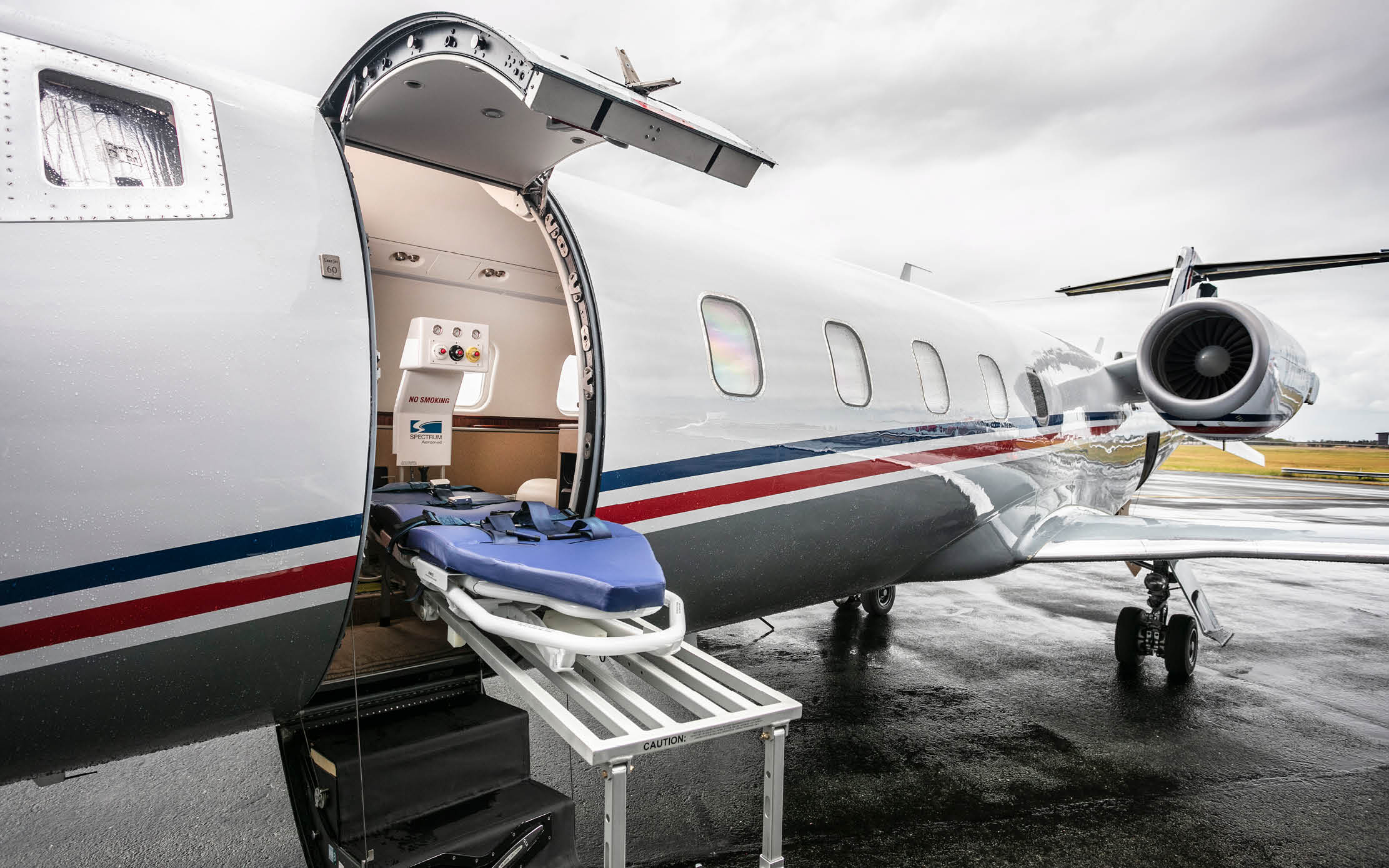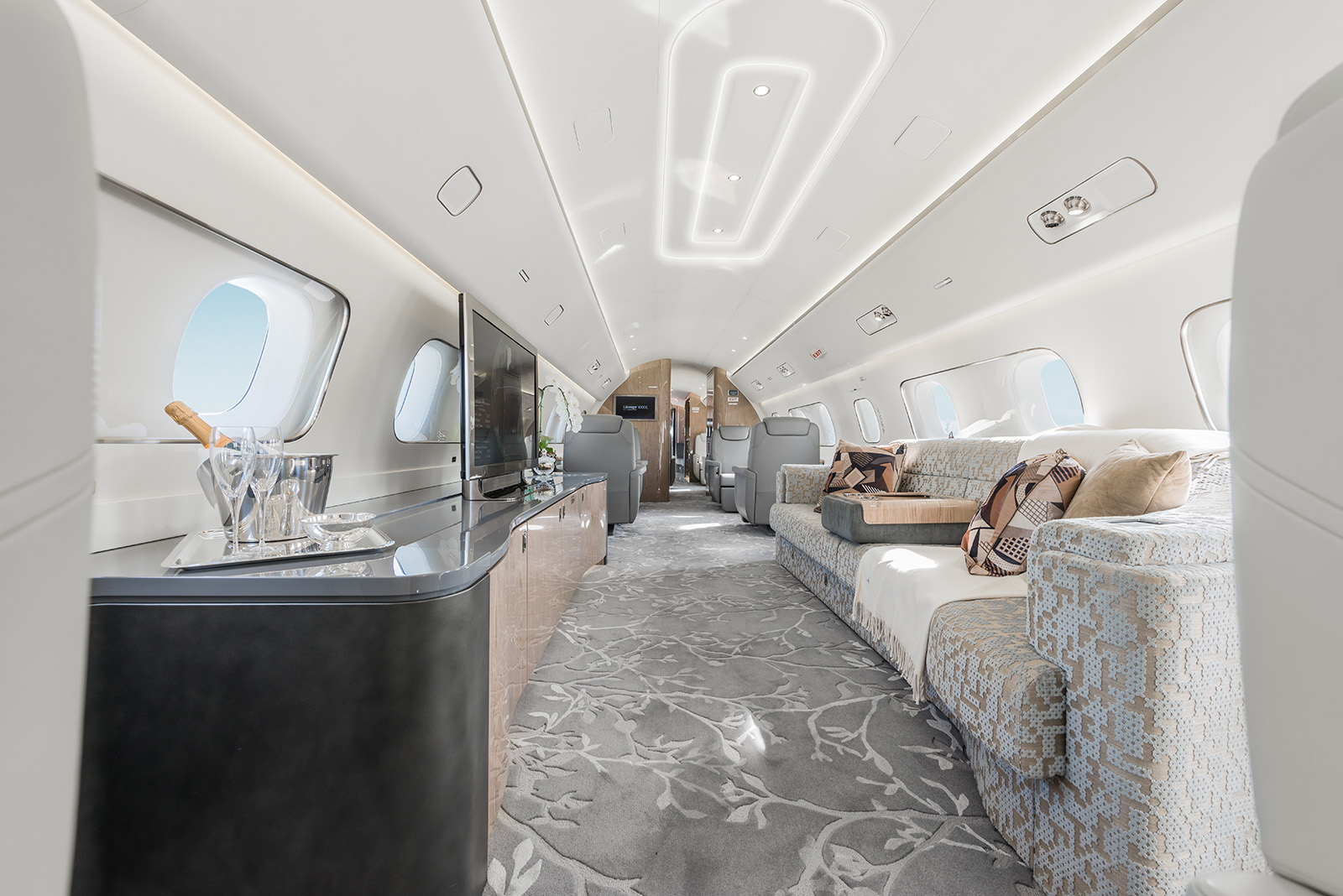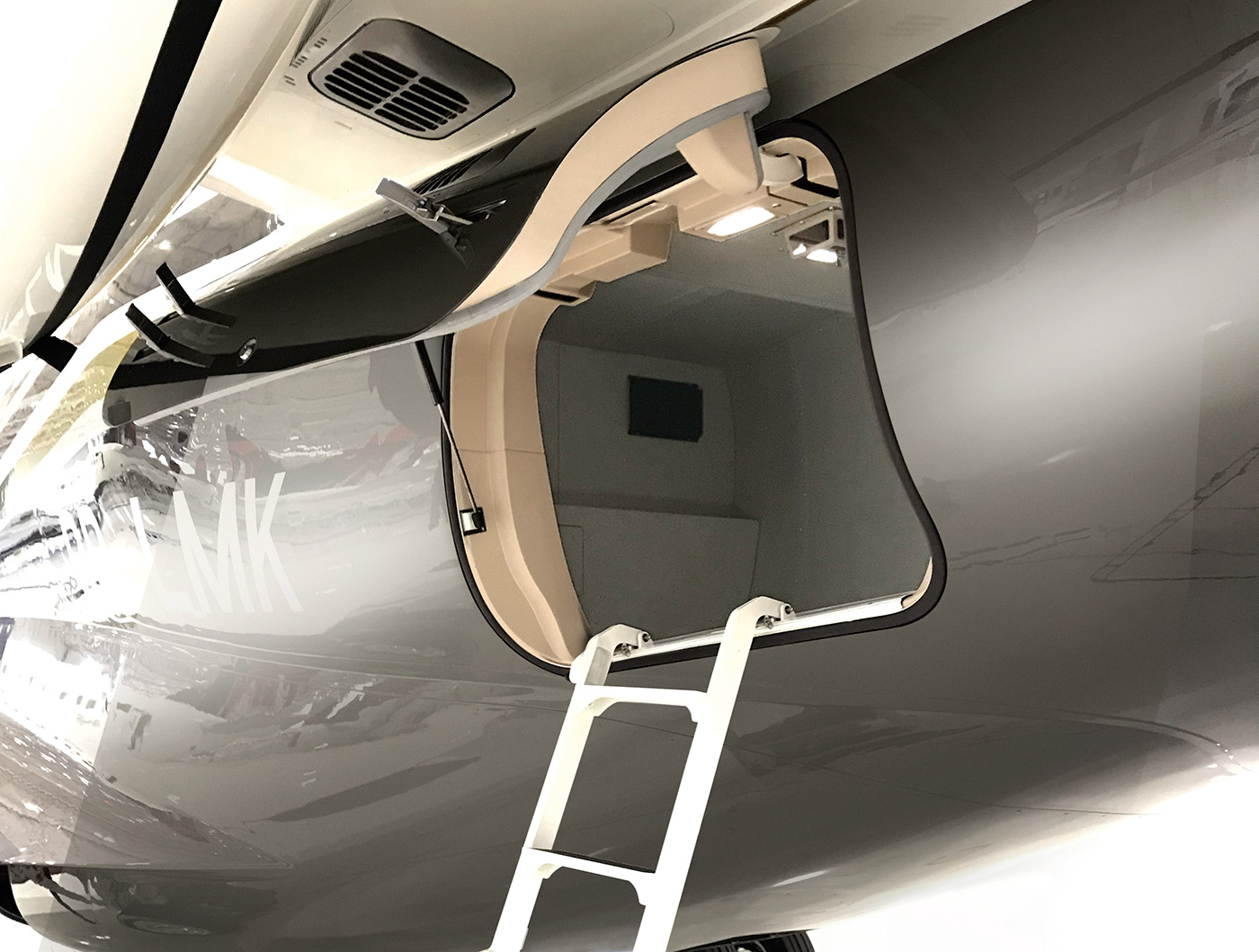[ad_1]
Helicopter Emergency Medical Services(HEMS) is an industry at risk. Due to a rash of fatal accidents, the industry is sicker than the patients being flown. The air med business is dying because, instead of saving lives, it’s killing people, namely helicopter crews, and often their patients.
The problem didn’t happen overnight; the solution won’t come quickly, either.
From the beginning, air medical helicopters have experienced a high accident rate. The risk can never be eliminated, but it can be mitigated and reduced to the point where an air med accident is rare. The following treatise tells how that can be done. If all the initiatives listed here were put in place tomorrow, the HEMS accident rate would drop to near zero. Here’s the road map of how that can happen.
” First recommendation: for those programs requesting it, an immediate safety stand-down for FAA or other outside party review on all aspects of the HEMS operation.
One of the difficulties with the accident rate in air medical is simple semantics. What is an accident, and how are the statistics compiled? Here’s the bottom line: the stated expectation must be a zero accident rate.
A Special FAR is needed, a new regulation aimed specifically at air medical operations similar to the regs in place for helicopter tour operators. For years the FAA has been unwilling or unable to simply shut down an operator or individual program site for safety or regulatory violations. There should be the institution of an anonymous tip line to the FAA, a whistle-blower feature for passengers, crew, or other employees of the various operators to use, something similar to the NASA safety reporting form. The potential for abuse is always present with such a system; but the potential for increased transparency is, as well, and the issue is critical.
” Pilots must be better vetted and trained.
There are too many programs, and too many helicopter operators such that the pilot staffing pool is too thin. With lower experience levels, and more programs flying more aircraft more hours, a growing accident rate is almost inevitable. A direct link can be made between the start of hostilities in Iraq, and the latest rise in the rate of air medical accidents. Many veteran pilots with a military affiliation are flying overseas, leaving programs at home understaffed, or with less experienced pilots in cockpits, or both.
Given the fact that most air medical accidents are weather related this makes sense. Military pilots are better able to maintain control in IIMC. The skills military pilots acquire, both in flight and with access to simulators, also confer a level of confidence unavailable to non-military pilots.
Another reason air med requires more professionalism and oversight is, that programs are 24/7 operations, with a high percentage of flying at night. Pilot error is the single most common factor in air medical accidents, and current crew rest rules are inadequate to address that. Shutting down a program after dark is not an option*, as these are emergency response vehicles, and must be staffed accordingly.
” Instrument Flight capability for recovery only in all air medical helicopters.
If used correctly, IFR capability is a powerful risk reducer in HEMS operations. What operators commonly substitute for IFR capability is company policy which demands that pilots avoid instrument weather at all cost. But denial of upgraded capability is inexcusable in a company which offers aviation assets to the public. The FAA should demand IFR capability for air medical helicopters as part of the new SFAR. This would serve two purposes: it would give pilots needed options; it would increase the standard of companies competing for air med business, drive marginal operators away.
Let me be clear about this: I propose IFR capability for recovery only, not for launch. IFR equipment, coupled with ongoing instrument training, will go a long way toward eliminating air med accidents.
Most fatal accidents have happened en-route to a patient pickup, or after a pilot has aborted the flight, and turned toward home base. This says that air med crews are accepting missions in weather that’s marginal at best, an attempt to take off and check conditions over a commonly flown route. Just so, the more emphasis placed on weather avoidance, and dismissal of IFR capability in lieu of weather minimums and dogmatic measures, have made air medical less safe.
Pilots must find the delicate balance between program needs and their professional standing. Air med pilots are just charter pilots with a single client. But the trappings of the air med program, the flight suits, logos, and close interaction with medical staff is a constant enforcement of the team concept at a client hospital. There’s nothing wrong with team spirit. But the elite nature of air med flight crews can dilute a pilot’s command authority in situations where patient need appears to override aviation considerations. Weather factors can be minimized. Nuisance maintenance issues ignored. Crew rest times can be arbitrarily extended to pursue a patient mission at crew change time. At most programs, pilots are shielded from patient information, to avoid undue pressure on them to accept or reject a flight. This is a good protocol. But the simple truth is, that pilot exposure patient medical condition is unavoidable at the onset of the mission, or at any time during the flight. What’s needed is a more professional, more objective pilot in the first place.
Give site managers the authority they need to enforce safe practices. Site managers have little authority to enforce pilot codes, or punish unprofessional behavior. Most accidents begin in the hiring phase, lying in wait for the right conditions. Posting a pilot to a contract site is expensive. But when a client hospital demands a pilot’s removal, or a site manager learns of safety infractions, that manager must be able to take action.
Air medical flying has always had a reputation for having an emergency, rapid-response atmosphere. This sheen of excitement is what attracts certain people to it, the so-called adrenaline junkies. From my 20 years in a HEMS cockpit, I can attest to the high-profile nature of the work. There’s nothing more exciting than having the helicopter clatter out of the sky, arrive on scene, and land to save the day. The feeling is intoxicating, even if it is illusory. It’s easy to lose sight of the aviation aspect of it.
The bottom line is, that pilots at air med programs are locked and loaded to fly, and not every pilot is cut out for it. Accepting a mission is the default mode. But instead of being paid to fly, pilots must understand that they’re being paid for the judgement to not fly at times. FAR part 105, the so-called ‘pilot-in-command’ rule, not only protects pilots and the decisions they make, but it eliminates the potential hazard of a diluted decision, a decision made by a committee. Especially with the rapid growth of the HEMS industry, hour requirements and necessary experience levels have dropped. The pilot pool has shrunk beyond the competence level required.
” Multi-engine aircraft in air medical operations.
All air medical programs should field multi-engine helicopters. If that proves too much for the budget, the hospital should abandon the air medical program, or seek a consortium arrangement.
Having two engines, and the doubling of other on-board systems, simply brings the aviation asset up to par with the medical equipment it carries. Medical staff routinely have backups for everything; their aircraft should have nothing less.
Multi-engine aircraft also obviate additional mechanic staffing. Two mechanics are more efficient, better rested, doubly trained, and have more latitude toward performing required tasks to keep the equipment operating.
Another less obvious benefit to fielding twin-engine aircraft is the potential for pilot training. Depending on the aircraft, an extra seat is available in the cockpit on every flight. That empty seat ought to be used for an observer, a rookie pilot, or a new hire to ride along, to see first hand how the operation works.
Another advantage of this change is, that the copilot could be someone in training. If done properly, this position could be a revenue source for innovative operators willing to help a pilot build up his or her logbook, and willing to pay for the opportunity, to the benefit of the operator’s bottom line.
” CVR/FDR/TAWS/GPS moving map installation in air med helicopter cockpits.
The FAA should mandate cockpit voice recorders, and/or flight data recorders in every HEMS cockpit. This would add transparency to every air med mission. These boxes would have two additional benefits: they would assist in an accident investigation, a use for which they were designed; and they would facilitate maintenance work by recording and archiving system operating parameters. TAWS is nothing more than ground avoidance technology, another layer of protection. GPS should be a requirement in all HEMS cockpits.
” De-emphasize rapid response/takeoff time.
In spite of programs’ PR efforts, and patient impact evidence to the contrary, a rapid response only puts the aircraft and crew at risk, makes negligible difference in patient outcome, and should be de-emphasized. A launch time of ten minutes is not unreasonable. No other part 135 operation would advertise a five minute takeoff time, nor would the FAA grant operations specifications for such a thing. In actual practice, the HEMS mission is, by and large, a transport system to provide a stable, monitored environment for patients between hospitals.
” Higher program weather minimums, and mandatory down-status.
Weather is a factor in 50% of HEMS accidents. Program and FAA-mandated weather minimums are typically stringent, but at most programs they still border on marginal VFR. The environment in which air medical aircraft operate is typically where weather information is least available and/or reliable–below three thousand feet, far from weather reporting outlets, and often below radar coverage.
” Hospital administration must be more involved.
The administration of air med programs must become more intimately involved in day to day operations. Launch decisions should be reviewed; mandatory short takeoff times should be abandoned; borderline pilots, or those who consistently make poor decisions should be held accountable; safety committees should be established, with authority to make major decisions, including the configuration of the aircraft.
Medical directors should apprise physician staff of safety issues concerning air medical, including the need for better triage to eliminate non-emergent air transports. A culture of support must be effected for no-go decisions. The tendency for medical staff receiving a transport request is to use the helicopter if any indication exists that it’s needed. The underlying assumption is, that the patient needs to be flown, or a doctor would not have called.
But patients are often flown only for mundane logistical reasons. Various EMS services are available on a limited basis. Taking a ground rig away leaves the county uncovered for long periods. The helicopter is often used as a substitute in these cases. Thus, the air medical asset closest to the patient is often used when there’s no indication the patient needs to be flown.
I was a pilot in command of an air medical helicopter for twenty years. I understand the pressures and contingencies, regulations, environment and politics that air med pilots are exposed to every day. From my first air medical flight in July 1983, to my last in October 2003 I saw one of every kind of patient mission there is, except one. I never witnessed a birth on board the helicopter. That simple fact, that in 3,200 patient missions I never once witnessed a birth is instructive. It means triage for women about to deliver was done with utmost care. Both attending and receiving physicians knew not to call the helicopter.
The point is, that adequate triage, better consultation, or both, especially with today’s technical ability for doctors to share information, is a key in the air medical safety puzzle, because it means fewer flights, thus more attention to truly urgent flights.
With four pilots per contract, and where program hours are low anyway, the operator may (rightly) be concerned about less flying proficiency. In this case the sponsoring hospital should contract for more training hours, match their assets with another hospital in a consortium arrangement, or cede the air medical transport service altogether, thus saving needed health care dollars.
Do fewer flights mean lowered service to potential clients? No, it means better service to clients who need the service more. While flying a routine, stable hospital transfer patient, the helicopter is out of service to respond to a trauma, or other emergent patient.
“The bottom line must be secondary to safe practices, and hard aviation realities.
Typically, a hospital based helicopter system is set up on a mixed staff basis, with pilots and mechanics employed by the aviation vendor, and the hospital staff employed in house. Sponsoring hospitals can budget for aircraft services; they have the option of renewing a contract with a vendor–or not; they don’t assume the burden of aircraft maintenance, or staff training; and they avoid out of service time by having a backup aircraft within guidelines established in the contract. Leasing the asset also provides a hospital the opportunity to more easily upgrade to additional program functionality, such as IFR, NVG, multi-engine, or other changes.
But contracts offer only so much, and therein lies one of the more entrenched problems, with air medical safety often hanging in the balance: innovation is stifled, and safety initiatives shuttled between client and vendor, with little or no, or extremely slow resolution. There’s no direct connection between funding and safety, of course. But there needs to be more attention paid to backup systems for HEMS operations. No surgeon would operate when the hospital’s standby generator is out of service. No flight nurse would take off with no backup batteries for a heart monitor, or extra oxygen bottles. No hospital would place its million dollar MRI machinery uncovered in the parking lot, exposed to the elements.
But hospitals use single-engine helicopters, with VFR only cockpits, no NVG or GPS or TAWS capability, one electrical system, one hydraulic system, and one pilot on the overwhelming number of air med missions. The aircraft is typically parked on a pad outside, exposed to wind, rain, icing, heat, and all manner of corrosive elements, when hangarage could be acquired for little cost, keeping the helicopter dry, clean, ice and snow free, reducing maintenance issues, and more quickly prepared for flight.
Accountability is a very good thing. But due to the glacial pace of change in any institution, and given today’s focus on reducing health care costs, any innovation, regardless of how appealing or relevant to minimizing risk in the air medical environment, is inevitably caught up in the control/justification/budget triangle, with numerous layers of bureaucracy. In the meantime, needed innovations and safety measures are shelved, or passed between client and vendor, with neither accepting financial responsibility. Until such time as safety prevails in the air medical field, contracts should be renegotiated year to year, with an escape clause for both parties. This would allow clients to better budget for new innovations, and for operators to escape onerous contracts, better serve customer demands, and be more attentive to the bottom line in a field already littered with bankrupt operators.
One beneficial byproduct of yearly contracting would be to drive out marginal operators, by recognizing that only larger, more flexible companies can bid on and expect to win hospital contracts, which require a rapid turnaround of assets. Another advantage to one-year contracts is, that this would force standardization of equipment. Presently, even two aircraft sited at the same hospital often have different medical installations, radio packages, lighting, warning systems and cockpit instrumentation. This may not be a problem for a contract site using the same pilots all the time, (or it may be a major problem), but the lack of standardization precludes another solution to the air medical accident puzzle.
Pilots at a particular program operate with little or no oversight from company headquarters. In such an arrangement, pilots often share only among themselves the various problems, maintenance gripes, and operational glitches. There exists no mechanism for collective focus and sharing of safety information company-wide, except for contact through annual check flights, or a company newsletter of some kind. This is yet another reason client hospitals should employ larger companies, as they have more latitude to hire and employ check pilots and relief pilot staff to float between programs. Doing so would disseminate good data and safety practices across the company.
Larger companies are also better able to use another innovation that would enhance safe operations: the transfer, or shared pilot concept. Transference between contract sites would add to the transparency and oversight of programs, and increase the level of professionalism. This is yet another reason hospitals should field multi-engine aircraft. The unoccupied cockpit seat could be used to orient a relief or transfer pilot, as a company check pilot station, or again, to train a new hire pilot, a functionality unavailable to single-engine operations.
In addition to the transparency and increased knowledge base, visiting pilots would offer the medical staff an objective forum to discuss deficiencies in the program, or challenges with sited pilot staff. It would also have the desirable effect of decreasing whatever level of protective opacity that may exist in the ‘team oriented’ environment.
Yet another solution to safe operations is to decrease the level of team cohesion that may promote a protective amnesia about unsafe or marginal individuals, either aviation or medical staff. Client hospitals may even consider altering the makeup of flight staff, replacing the traditional flight nurse team with floating medical staff to go along with visiting pilot staff. This would place more emphasis on the ‘air’, and less on the ‘medical’ part of the equation, increasing the level of safety. Patients and nurses don’t crash; pilots and helicopters do.
One solution to this dilemma has already been listed, a solution that is open heresy to the air medical community. There are simply too many air medical helicopters, operating at too many hospitals, by too many vendors. If patient outcomes, mortality and morbidity were being positively affected, all to the good. But, after thirty years of operating air medical helicopters, there’s no objective evidence either of those is happening. Meantime, more air medical crews are dying in accidents. There’s plenty of anecdotal information, and hundreds of patients will testify to the good these aircraft and crews have done, as will I. But the simple, stark reality is, that air medical aviation is sicker than the patients it’s attempting to reach. Measures must be taken to change the situation.
” Reduce operating areas at night, or use two pilots/ IFR/NVG and TAWS.
One of the boldest solutions to the air medical accident rate will also be the most controversial. Given the nature of air medical, particularly in light of its image Vs reality, hospitals interested in reducing risks, and raising the standard of safety should consider reducing their response radius after a certain time, midnight being the likely cutoff, to a distance of twenty-five miles from the home facility. This restriction would benefit safety in several ways: it would automatically reduce fatigue levels in air med crews; it would be an automatic triage function, putting requesting hospitals and physicians on notice that a patient needing air transport must be flown before midnight, or wait till morning. A reduced operations area would cut the risk of weather-related accidents, putting helicopters closer to the home hospital, thus obviating the aircraft’s use for only emergent patients. Shrinking the response area would also preclude much of the risk associated with weather changes en-route, or due to long wait times at outer hospitals and/or loiter points. Another benefit, particularly at programs with two or more aircraft, is the increased availability for maintenance. It would also save sponsor hospitals money, since the revenue hours flown would likely be less. Plus, the possibility exists that fewer pilots would be needed with a reduced coverage area after midnight.
An alternative to this proposal is the use of IFR cockpits, NVG equipped crews (including medical staff), and adoption of proposed Terrain Awareness & Warning System in all air medical helicopter cockpits per Section 508 of S. 1300*, a bill in the U.S. Senate aimed at rectifying the accident rate in HEMS operations**.
Every program’s statistics are different, and air medical is, after all, an emergency rescue service. But limiting the rescue service would not be the intent; the intent is increased oversight through better triage of transport requests. At most programs, so-called on-scene missions comprise the lowest percentage of response flights. The larger number is stable, non-emergent patient missions. It’s been debated for years whether or not the use of helicopters impacts patient mortality and/or morbidity. That debate will continue. But until the safety issue is adequately addressed, it will override all others. And until safe flight of air medical helicopters becomes a given, advisability of using them for patient transport must be watched more carefully.
The HEMS accident rate will only be reduced when the three legs of the stool are in place: pilots; aircraft & equipment; and hospital/operator oversight. Until the changes listed herein are accepted practice in air medical flying, accidents will continue to plague this critical industry. It’s my hope that all involved can step away from the habits of the past, and focus on the changes needed to make HEMS the safe, efficient patient transport system it can be.
Accidents are not inevitable; they happen when factors conspire against a program and pilots which are relaxed and complacent in regard to safe practices. Helicopter air medical is terribly unforgiving of neglect and incompetence; operators, pilots and their colleagues, and sponsor hospitals must be aggressive in identifying and addressing any and all safety issues immediately, without regard to personnel, political, financial or administrative matters. There’s too much at stake to maintain a cavalier attitude, or assume that an accident can’t happen. Helicopters are flown safely all the time. But it doesn’t happen by accident.
In summary, my recommendations for raising the safety level of air medical helicopters are the following:
*Senate Rule S.1300 is listed.
– For those programs requesting it, an immediate safety stand-down for FAA or other outside party review and report on all aspects of the operation.
– Pilots must be better vetted, and trained emphasizing weather incursion recovery.
– Instrument flight capability for recovery only in all air medical helicopters.
– Higher pilot hours in the aircraft being flown, to include a minimum of 2,000 hours to be hired, 20 hours in type, 10 hours at night, and 50 hours of actual or simulated weather time.
– Multi-engine aircraft in all HEMS operations.
– CVR/FDR/TAWS installation in air med helicopter cockpits + modular installations.
– De-emphasize rapid response/takeoff time.
– Higher program weather minimums, and mandatory down-status.
– Hospital administration must be more involved.
– The contract bottom line must be secondary to safe practices and hard aviation realities. Yearly contracts to expedite innovation time for safety proposals.
– Reduce operating areas at night, or use two pilots.
– Requirement for availability to all medical crews of a no-flight or abandon-mission protocol without fear of repercussion.
– Site manager a hospital employee with authority to hire and fire, with pilot status a plus.
– FAA SFAR for air medical helicopter operations codifying weather minimums, IFR equipment, NVG, TAWS, dual pilot capability, and op specs required for expanded area operations after dark or below specific weather values.
– All air medical flights conducted under part 135 regardless of patient presence.
Equipment Requirements:
Multi-engine aircraft
IFR for recovery only
NVG capability
TAWS
Wire cutters
CVR/FDR
GPS moving map
Weather access in the cockpit in real time
*Legislation, S. 1300, has been introduced in the U.S. Senate to authorize appropriations for the Federal Aviation Administration (FAA) for fiscal years 2008 through 2011 to improve safety and capacity and to modernize the air traffic control system. In addition to the issues previously discussed concerning user fees and surcharges and an increase in the fuel tax, S. 1300 also would mandate significant changes for helicopter emergency medical service operators.
Section 508 of S. 1300 would mandate compliance with Part 135 regulations whenever medical crew are on board, without regard to whether there are patients on board the helicopter. Within 60 days of the date of enactment of S. 1300, the FAA would be required to initiate rulemakings to create standardized checklists of risk evaluation factors and require helicopter EMS operators to use the checklist to determine whether a mission should be accepted. Additionally, the FAA would be required to complete a rulemaking to create standardized flight dispatch procedures for helicopter EMS operators and require operators to use those procedures for flights.
Any helicopter used for EMS operations that is ordered, purchased, or otherwise obtained after the date S. 1300 was enacted would also be required to have on board an operational terrain awareness and warning system (TAWS) that meets the technical specifications of section 135.154 of the Federal Aviation Regulations (14 C.F.R. 135.154).
To improve the data available to National Transportation Safety Board (NTSB) investigators at crash sites, the FAA would also be required to complete a feasibility study of requiring flight data and cockpit voice recorders on new and existing helicopters used to EMS operations. Subsequent to the feasibility study, the FAA would be required within two years of S. 1300’s enactment to complete a rulemaking requiring flight data and cockpit voice recorders on board such helicopters.
All Helicopter Association International (HAI) operators conducting EMS operations are strongly encouraged to review the provisions contained in *Section 508 of S. 1300. HAI is interested in hearing from you with respect to any concerns you might have over the requirements contained in this legislation. Please contact David York or Ann Carroll via email at [email protected] or [email protected].
HAI continues to analyze legislation in the U.S. House of Representatives and the U.S. Senate with respect to FAA reauthorization and general aviation user fees, surcharges, and other safety provisions. More information will be provided on the HAI Web site as developments occur in Washington.
**Section 508 of S. 1300
S.1300
Aviation Investment and Modernization Act of 2007 (Introduced in Senate)
SEC. 508. INCREASING SAFETY FOR HELICOPTER EMERGENCY MEDICAL SERVICE OPERATORS.
(a) Compliance With 14 CFR Part 135 Regulations- No later than 18 months after the date of enactment of this Act, all helicopter emergency medical service operators shall comply with the regulations in part 135 of title 14, Code of Federal Regulations whenever there is a medical crew on board, without regard to whether there are patients on board the helicopter.
(b) IMPLEMENTATION OF FLIGHT RISK EVALUATION PROGRAM- Within 60 days after the date of enactment of this Act, the Federal Aviation Administration shall initiate, and complete within 18 months, a rulemaking–
(1) to create a standardized checklist of risk evaluation factors based on its Notice 8000.301, issued in August, 2005; and
(2) to require helicopter emergency medical service operators to use the checklist to determine whether a mission should be accepted.
(c) COMPREHENSIVE CONSISTENT FLIGHT DISPATCH PROCEDURES- Within 60 days after the date of enactment of this Act, the Federal Aviation Administration shall initiate, and complete within 18 months, a rulemaking–
(1) to create standardized flight dispatch procedures for helicopter emergency medical service operators based on the regulations in part 121 of title 14, Code of Federal Regulations; and
(2) require such operators to use those procedures for flights.
(d) IMPROVING SITUATIONAL AWARENESS- Any helicopter used for helicopter emergency medical service operations that is ordered, purchased, or otherwise obtained after the date of enactment of this Act shall have on board an operational terrain awareness and warning system that meets the technical specifications of section 135.154 of the Federal Aviation Regulations (14 C.F.R. 135.154).
(e) Improving the Data Available to NTSB Investigators at Crash Sites-
(1) STUDY- Within 1 year after the date of enactment of this Act, the Federal Aviation Administration shall complete a feasibility study of requiring flight data and cockpit voice recorders on new and existing helicopters used for emergency medical service operations. The study shall address, at a minimum, issues related to survivability, weight, and financial considerations of such a requirement.
RULEMAKING- Within 2 years after the date of enactment of this Act, the Federal Aviation Administration shall complete a rulemaking to require flight data and cockpit voice recorders on board such helicopters.
[ad_2]
Source by Byron Edgington










